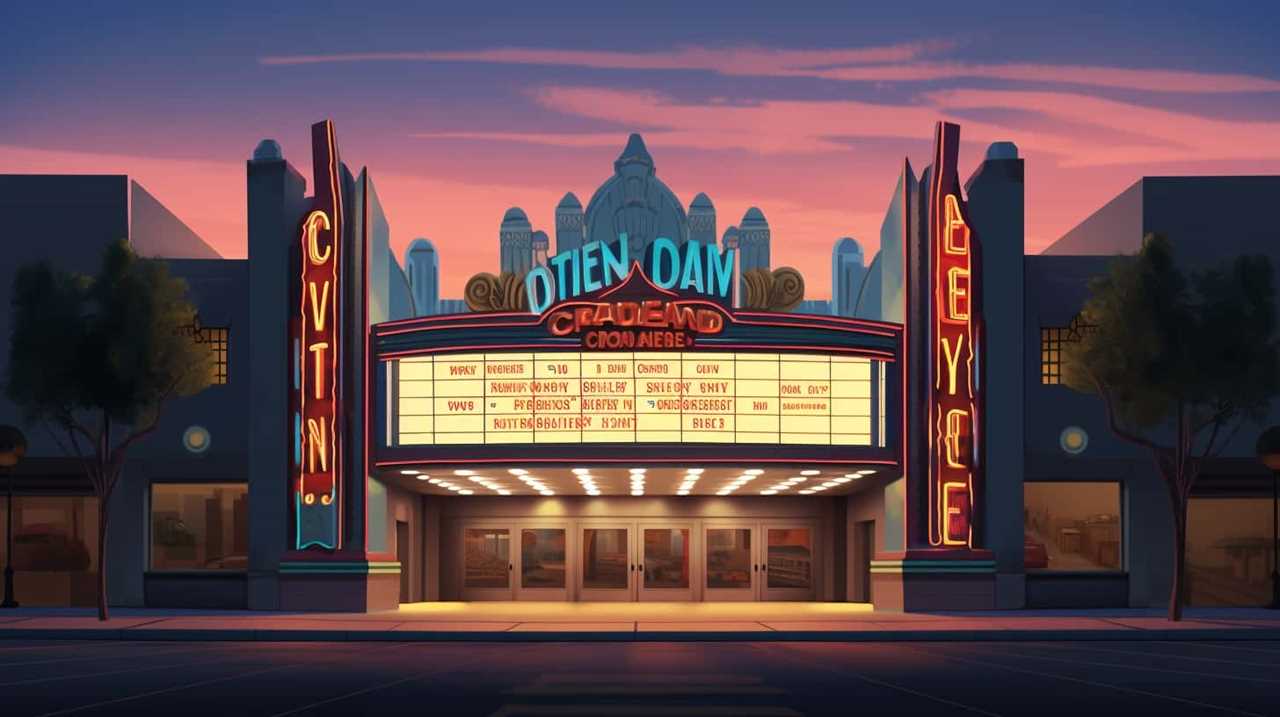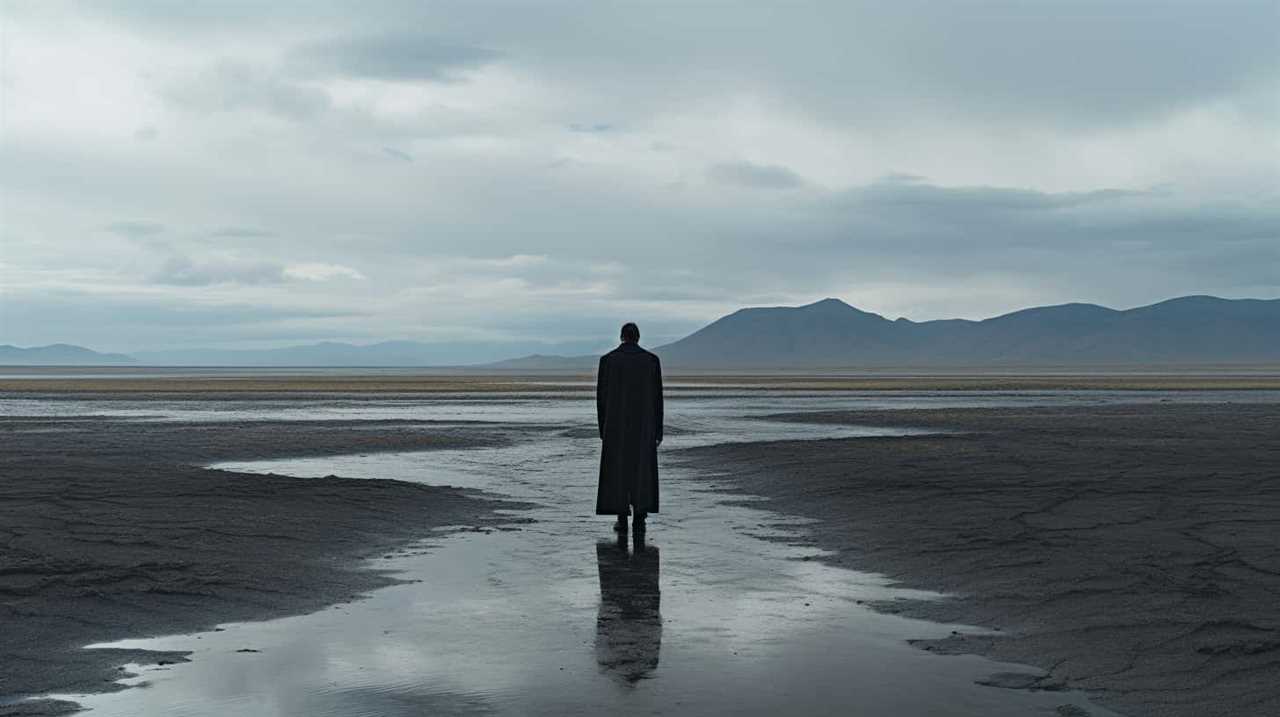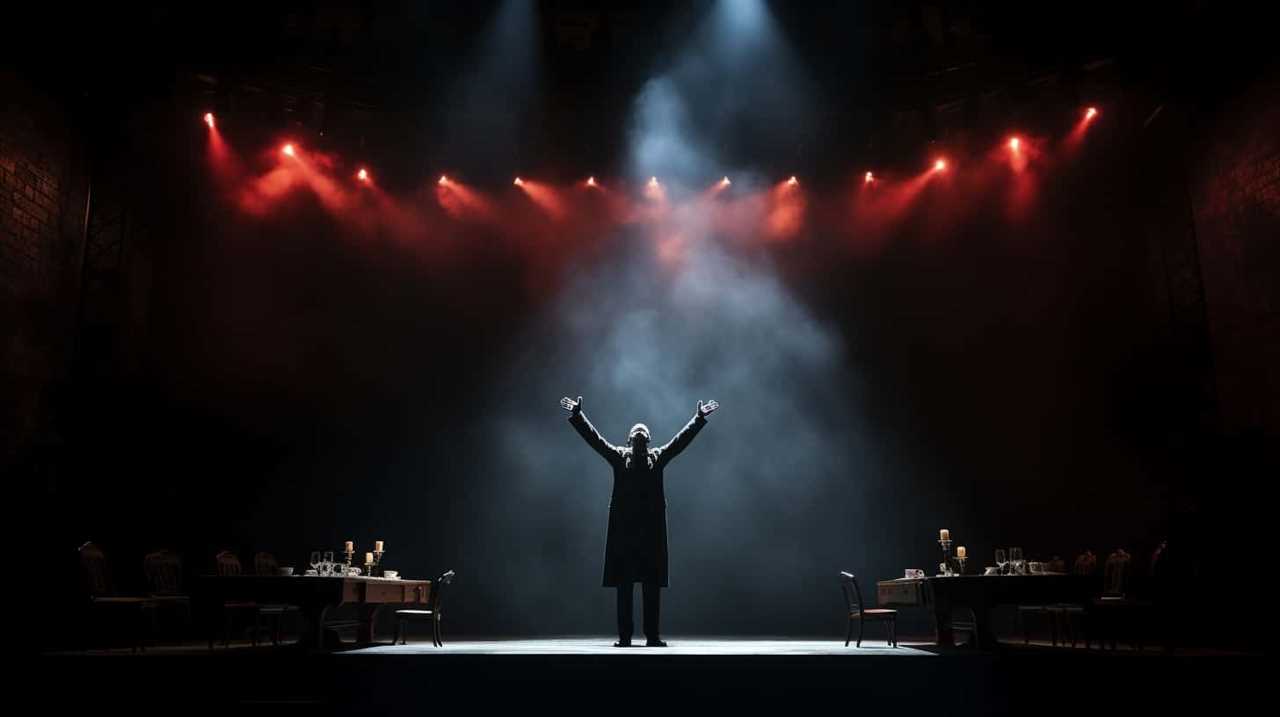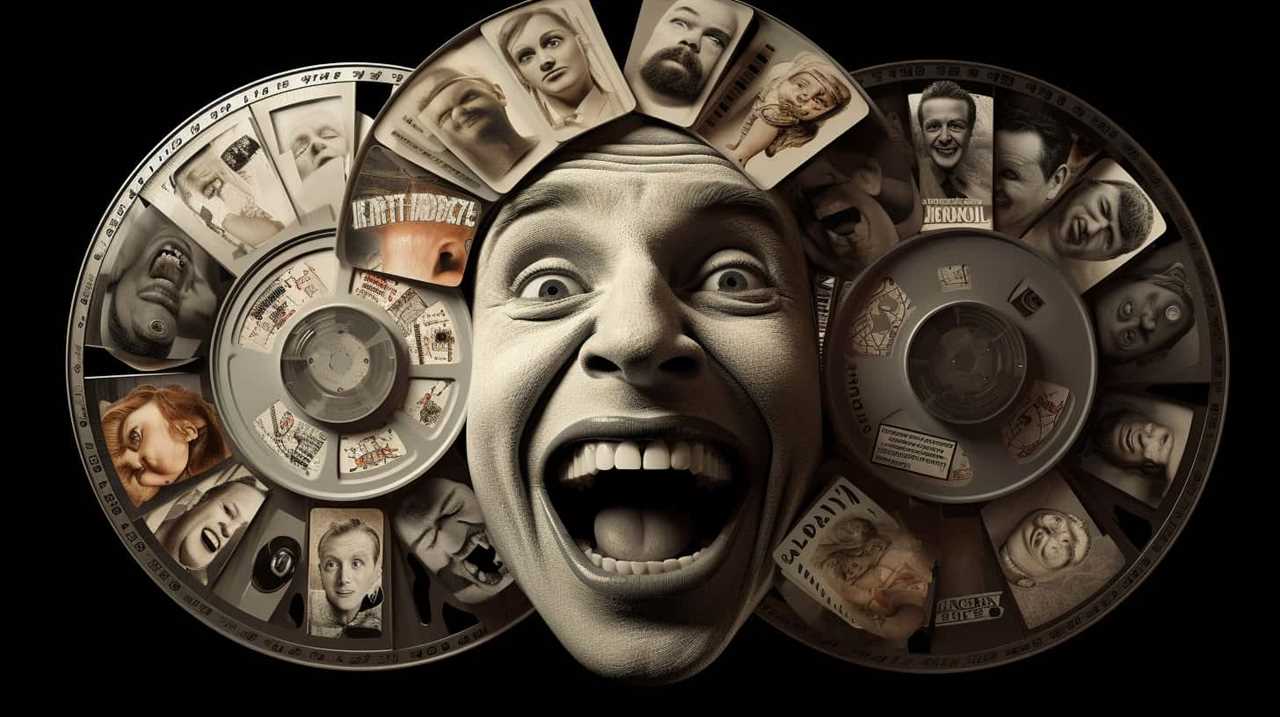As I delved into the vast world of movies, I discovered a diverse array of films that fearlessly explored the essence of existence itself. These movies served as a lens, separating and reflecting the complex aspects of life, prompting us to reconsider our perception of reality and explore the depth of our own existence.
From the mind-bending realms of ‘The Matrix’ to the ethereal landscapes of ‘The Tree of Life,’ these eight films ignited a spark within me, urging me to seek meaning and purpose in this ever-evolving world.
With themes ranging from memories and identity to artificial intelligence and communication, these films transcend the ordinary, offering a glimpse into the extraordinary tapestry of existence.
Join me on this journey as we unravel the profound mysteries that lie at the heart of these cinematic treasures.

Key Takeaways
- Films exploring the nature of reality and perception, such as The Matrix, Eternal Sunshine of the Spotless Mind, Synecdoche, New York, and Arrival, challenge our understanding of perception and explore alternate realities, memories, artistic representation, and non-linear narrative.
- Films exploring the impact of technology and artificial intelligence, like Blade Runner and Interstellar, raise questions about the nature of humanity and the ethical implications of artificial life, as well as the dehumanizing effects of technology.
- Films contemplating the meaning and purpose of existence, such as The Tree of Life and Synecdoche, New York, reflect on the interconnectedness of all life and use artistic expression to delve into the meaning of life.
- Films exploring the concept of time and space, such as Interstellar, delve into the nature of time and space, and emphasize humanity’s desire for discovery and understanding.
The Matrix: Questioning Reality
In The Matrix, I constantly question the reality that surrounds me. This groundbreaking film challenges the very nature of perception, forcing us to confront the possibility that our world is nothing more than an elaborate illusion. As the protagonist, Neo, delves deeper into the rabbit hole, we’re taken on a mind-bending journey that explores the concept of alternate realities.
The film’s central theme revolves around the idea that what we perceive as real may not necessarily be so. It prompts us to question the limits of our senses and the reliability of our perceptions. The Matrix encourages us to challenge the status quo and venture into uncharted territories of thought.
By presenting a dystopian future where humanity is enslaved by machines, the film invites us to ponder the nature of our own existence. It raises philosophical questions about the nature of reality and the potential for human agency in a world governed by external forces.
Through its stunning visual effects and thought-provoking narrative, The Matrix pushes the boundaries of cinematic innovation. It captivates audiences with its innovative storytelling techniques, leaving us questioning our own perception of reality long after the credits roll.

Eternal Sunshine of the Spotless Mind: Memories and Identity
I was deeply affected by how Eternal Sunshine of the Spotless Mind explores the intricate connection between memories and personal identity. This thought-provoking film delves into the profound impact of our memories on our sense of self and the consequences of erasing them.
Memories play a crucial role in our lives, shaping our beliefs, emotions, and understanding of ourselves. They provide us with a sense of continuity and allow us to make sense of our experiences. In Eternal Sunshine of the Spotless Mind, the characters embark on a journey of self-discovery as they grapple with the decision to erase their memories of a failed relationship. As the memories are systematically erased, they begin to question their own identities and the meaning of their existence.
The film raises compelling questions about the nature of personal identity. Can we truly be ourselves if we’re devoid of our memories? Are we defined solely by our past experiences, or is there something more fundamental that makes us who we are? By exploring these themes, Eternal Sunshine of the Spotless Mind invites us to contemplate the essence of our own existence and the role that memories play in shaping our sense of self.
The impact of erasing memories is a central focus of the film. While the characters initially believe that removing painful memories will free them from their emotional burdens, they soon come to realize that memories are an integral part of their identity. The absence of certain memories leaves them feeling incomplete and disconnected from their past selves. This realization highlights the importance of embracing our memories, both positive and negative, as they contribute to our growth and understanding of ourselves.

Blade Runner: Artificial Intelligence and Humanity
One film that delves into the complex relationship between artificial intelligence and humanity is Blade Runner. This iconic science fiction film directed by Ridley Scott explores the ethical implications of creating advanced artificial beings known as replicants and humanity’s evolving relationship with technology.
Here are four key aspects that make Blade Runner a thought-provoking exploration of artificial intelligence and ethics:
- The blurred line between human and machine: Blade Runner challenges our perception of what it means to be human by presenting replicants that possess emotions, memories, and desires. This raises profound questions about the nature of consciousness and the rights of artificial beings.
- Ethical implications of creating artificial life: The film forces us to confront the moral dilemmas surrounding the creation of intelligent beings. The replicants in Blade Runner are designed to serve humanity, but they rebel against their predetermined roles, leading us to question the responsibility and consequences of playing god.
- The dehumanizing effects of technology: Blade Runner depicts a dystopian future where technology has advanced to the point where it threatens to dehumanize society. The film explores the alienation and detachment that can arise from an overreliance on artificial intelligence.
- The search for identity and purpose: Blade Runner explores the existential crisis faced by both humans and replicants as they grapple with questions of identity, purpose, and mortality. The film challenges us to reflect on our own humanity and what it truly means to exist.
With its thought-provoking exploration of artificial intelligence and humanity’s relationship with technology, Blade Runner continues to be a significant film in the realm of science fiction.
As we delve into the next section on ‘Interstellar: Time and Space Exploration’, we’ll explore another facet of human existence: our relentless pursuit of knowledge and exploration beyond our own planet.

Interstellar: Time and Space Exploration
Continuing the exploration of artificial intelligence and humanity’s relationship with technology, Blade Runner transitions seamlessly into Interstellar, a film that delves into the vast realms of time and space exploration. Directed by Christopher Nolan, Interstellar takes viewers on an epic journey through the cosmos, exploring concepts such as time dilation and the existence of wormholes.
One of the key themes in Interstellar is the concept of time dilation, where time passes at different rates depending on the gravitational pull of a celestial body. This is beautifully depicted in the film when the crew of the spacecraft, Endurance, visit a planet near a massive black hole. Due to the intense gravitational forces, time on the planet passes much slower than on Earth, resulting in years passing by within a matter of hours.
Another fascinating aspect of Interstellar is the exploration of wormholes. These theoretical shortcuts in the fabric of space-time allow for interstellar travel, enabling humans to venture into distant galaxies. The film portrays the awe-inspiring journey through a wormhole, highlighting the vastness and mystery of the universe.
| Time Dilation | Wormholes |
|---|---|
| Time passes at different rates due to gravitational forces | Hypothetical shortcuts in space-time |
| Illustrated in the film when the crew visits a planet near a black hole | Enables interstellar travel |
| Years pass by quickly on the planet compared to Earth | Allows for exploration of distant galaxies |
Interstellar pushes the boundaries of our understanding of time and space, igniting our curiosity and showcasing the limitless possibilities that lie beyond our own planet. With its stunning visuals and thought-provoking narrative, it challenges us to ponder the mysteries of the universe and our place within it.

The Tree of Life: Reflections on Life’s Origins
Life’s primal beginnings have always fascinated me. The Tree of Life offers a unique exploration of existence’s origins, inviting viewers to contemplate the very essence of life itself.
Through stunning visuals and profound storytelling, the film prompts us to reflect on our place in the vast tapestry of the universe, and the interconnectedness of all living things.
Life’s Primal Beginnings
The film ‘The Tree of Life’ offers a profound exploration of the origins of life. It delves into the concept of primal evolution and the evolutionary principles that shaped our existence. Here are four key takeaways from the film:
- The Primordial Soup: The film depicts the primordial soup, a metaphor for the chaotic mixture of chemicals that existed on Earth billions of years ago. This symbolizes the foundation of life and the potential for complex organisms to emerge.
- Natural Selection: ‘The Tree of Life’ showcases the struggle for survival and the concept of natural selection. It highlights how the fittest organisms are more likely to survive and pass on their genetic traits, leading to the diversification of life forms over time.
- Cosmic Connections: The film explores the interconnectedness of all living beings, presenting a cosmic perspective on life’s origins. It suggests that we’re all part of a greater cosmic web, linked through shared DNA and evolutionary history.
- The Mystery of Life: ‘The Tree of Life’ also emphasizes the mystery and wonder of life’s origins. It invites viewers to ponder the existential questions surrounding our existence and the awe-inspiring complexity of the universe.
Contemplating Existence’s Origins
As I delve into ‘The Tree of Life: Reflections on Life’s Origins’, I’m captivated by its contemplation of existence’s origins. This film explores the profound question of where consciousness comes from and delves into various existential theories.

The narrative takes us on a journey through the evolution of life, from the origins of the universe to the emergence of human beings. It invites us to reflect on the interconnectedness of all living things and the mystery of our existence.
The film’s stunning visuals and poetic storytelling create a thought-provoking experience that challenges our understanding of reality. It encourages us to question our place in the universe and ponder the origins of consciousness.
‘The Tree of Life’ is a cinematic masterpiece that pushes the boundaries of filmmaking and invites audiences to contemplate the deepest questions of existence.
Reflecting on Life’s Essence
Reflecting on the essence of life, I find myself drawn to ‘The Tree of Life: Reflections on Life’s Origins’, a film that delves into the profound question of where consciousness arises from. This thought-provoking masterpiece invites us to contemplate mortality and ponder the purpose of our existence.
![]()
- Awe-inspiring cinematography: The film’s stunning visuals take us on a journey through the vastness of the universe, reminding us of the grandeur of life.
- Philosophical exploration: ‘The Tree of Life’ prompts us to question our place in the universe, igniting a deep introspection about the meaning of our lives.
- Emotional resonance: The film’s nuanced portrayal of human emotions allows us to connect with the characters on a profound level, evoking a wide range of feelings.
- Spiritual enlightenment: Through its exploration of spirituality and interconnectedness, the film invites us to find purpose in the interconnectedness of all things.
‘The Tree of Life: Reflections on Life’s Origins’ is a cinematic experience that encourages us to reflect on the essence of our existence, contemplate our mortality, and ultimately find a deeper sense of purpose in life.
Synecdoche, New York: Art and Existence
When it comes to exploring the essence of existence, few films are as thought-provoking and introspective as ‘Synecdoche, New York.’
The film delves into the complex relationship between art and existence, challenging the boundaries of reality and artistic representation.
Through its intricate narrative layers and surreal imagery, ‘Synecdoche, New York’ forces us to question the nature of our own existence and the role that art plays in shaping our understanding of reality.

Art as Existential Exploration
Synecdoche, New York exemplifies the profound connection between art and the exploration of existential questions. This film, directed by Charlie Kaufman, delves into the depths of artistic expression and philosophical exploration, intertwining them in a way that challenges our understanding of existence. Here are four key ways in which Synecdoche, New York explores art as a means of existential exploration:
- The power of artistic creation: The protagonist, Caden Cotard, embarks on an ambitious project to create a life-sized replica of New York City. Through this endeavor, he grapples with the nature of reality and the role of the artist in shaping it.
- The fluidity of identity: As the film progresses, Caden loses himself in his own creation, blurring the lines between his own identity and the characters he plays. This exploration of identity raises questions about the self and the masks we wear in our daily lives.
- The search for meaning: Synecdoche, New York delves into the existential quest for meaning and purpose. Caden’s project becomes a metaphor for life itself, as he strives to find significance and understanding in the chaos of existence.
- The inevitability of mortality: The film confronts the universal theme of death, reminding us of our own mortality and the fleeting nature of life. This exploration of mortality serves as a reminder to appreciate the present moment and the beauty found in the ordinary.
Synecdoche, New York is a testament to the profound impact that art can have on our understanding of existence. It challenges us to question our own reality and invites us to embark on our own artistic and philosophical explorations.
Reality Vs. Artistic Representation
Continuing the exploration of art as a means of existential inquiry, I delve into the subtopic of reality versus artistic representation in Synecdoche, New York, examining the profound connection between the two. In this film, directed by Charlie Kaufman, art becomes a vehicle for exploring the intricacies of existence and the blurred lines between perception and reality.
| Artistic Interpretation | Perception vs. Reality |
|---|---|
| The film delves into the subjective nature of artistic interpretation, highlighting how our perceptions shape our understanding of reality. | It challenges the notion of a singular objective reality, showcasing how our individual experiences and perspectives influence our interpretation of the world. |
| Kaufman presents a distorted reflection of reality, blurring the boundaries between the real and the imagined. | The film questions the reliability of our senses and the limitations of our understanding, reminding us that reality can be elusive and subjective. |
| Through elaborate sets and theatricality, Synecdoche, New York invites us to question the authenticity of our own experiences and the narratives we construct. | It prompts us to consider the role of art in shaping our perception of reality and the potential for self-deception in the pursuit of truth. |
Synecdoche, New York serves as a thought-provoking exploration of the complex relationship between reality and artistic representation, challenging our preconceived notions and encouraging us to question the nature of existence itself.

Arrival: Communication and Understanding
The Arrival explores the intricate process of communication and understanding in a thought-provoking and captivating manner. This film delves into the complexities of language and how it shapes our perception of the world. Here are four key aspects that make Arrival a groundbreaking exploration of communication and understanding:
- Communication barriers: Arrival challenges the idea that language is a universal tool for understanding. The film introduces a race of extraterrestrial beings who communicate through complex symbols, creating a barrier between humans and aliens. This highlights the difficulties in bridging the gap between different forms of communication and understanding.
- Linguistic relativity: The film also explores the concept of linguistic relativity, which suggests that language influences the way we think and perceive reality. As the protagonist, Louise, learns the alien language, her perception of time begins to shift. This raises profound questions about the nature of reality and the limitations of human understanding.
- Non-linear narrative: Arrival adopts a non-linear narrative structure, mirroring the non-linear nature of language and understanding. The film challenges our linear perception of time and encourages us to embrace a more holistic view of existence.
- Emotional depth: Beyond the intellectual exploration of communication, Arrival delves into the emotional aspect of understanding. It emphasizes the importance of empathy and connection in truly understanding one another.
Transitioning to the subsequent section about ‘The Truman Show: The Illusion of Reality,’ we can see that both films delve into the complexities of perception and the boundaries of understanding.
The Truman Show: The Illusion of Reality
How does The Truman Show challenge our perception of reality?
In this gripping film, director Peter Weir explores the concept of illusion vs reality, forcing viewers to question the very nature of their existence. The Truman Show tells the story of Truman Burbank, a man who unknowingly lives his entire life inside a massive, elaborate television set. Every aspect of his world is meticulously controlled, from the people he interacts with to the weather outside. Truman’s realization that his entire life has been a fabricated illusion leads to an existential awakening, as he grapples with the meaning of his existence and the boundaries of his reality.

The film raises thought-provoking questions about the nature of reality and the role of free will in our lives. It challenges us to examine our own lives and question the authenticity of the world around us. Are we merely characters in someone else’s narrative, or do we have the power to create our own reality? The Truman Show forces us to confront these unsettling questions, pushing us to reconsider our own perceptions of what’s real and what’s illusion.
It serves as a powerful reminder that our reality is often shaped by external forces, and that true liberation comes from breaking free from the constraints of societal expectations and embracing our own unique paths. The Truman Show is a cinematic masterpiece that will leave audiences questioning the very essence of their existence.
Frequently Asked Questions
How Does the Concept of Time Travel Play a Role in the Film Interstellar?
Time travel in Interstellar plays a pivotal role in exploring the essence of existence. Through the concept of wormhole exploration and the manipulation of gravity, the film delves into the complexities of time and space, challenging our understanding of reality.
What Are the Major Themes Explored in the Truman Show Regarding the Illusion of Reality?
In The Truman Show, the major themes explored are the illusion of reality and the constant struggle between reality and fiction. This thought-provoking film delves into the unsettling effects of media manipulation and the existential crisis it can create.

How Does the Film Blade Runner Explore the Relationship Between Artificial Intelligence and Humanity?
Blade Runner explores the deep and complex relationship between artificial intelligence and humanity, delving into the concept of sentience and the ethical implications of human-AI interactions. It raises thought-provoking questions about what it means to be human.
Can You Provide Examples of Specific Scenes in the Matrix That Question the Nature of Reality?
In The Matrix, specific scenes challenge our reality perception and raise existential questions. Through mind-bending moments like the red pill/blue pill choice and the simulation of the Matrix itself, the film invites us to question the nature of existence.
How Does the Film Arrival Explore the Complexities of Communication and Understanding?
Arrival explores the complexities of communication and understanding through its portrayal of the complexity of language and the perception of time. It challenges our notions of how we communicate and perceive the world around us.
Conclusion
In conclusion, these eight films offer a captivating exploration of the essence of existence.

One interesting statistic is that out of the top 100 highest-grossing films of all time, three of them are included in this list: The Matrix, Interstellar, and Blade Runner. This demonstrates the widespread appeal and fascination with existential questions in cinema.
By delving into themes such as reality, memory, artificial intelligence, and communication, these films provide thought-provoking insights into the complexities of our own existence.
Lauren’s talent in writing is matched by her passion for storytelling. Her love for books and deep understanding of culture and entertainment add a distinct flavor to her work. As our media and press contact, Lauren skillfully bridges the gap between afterQuotes and the broader media landscape, bringing our message to a wider audience.










